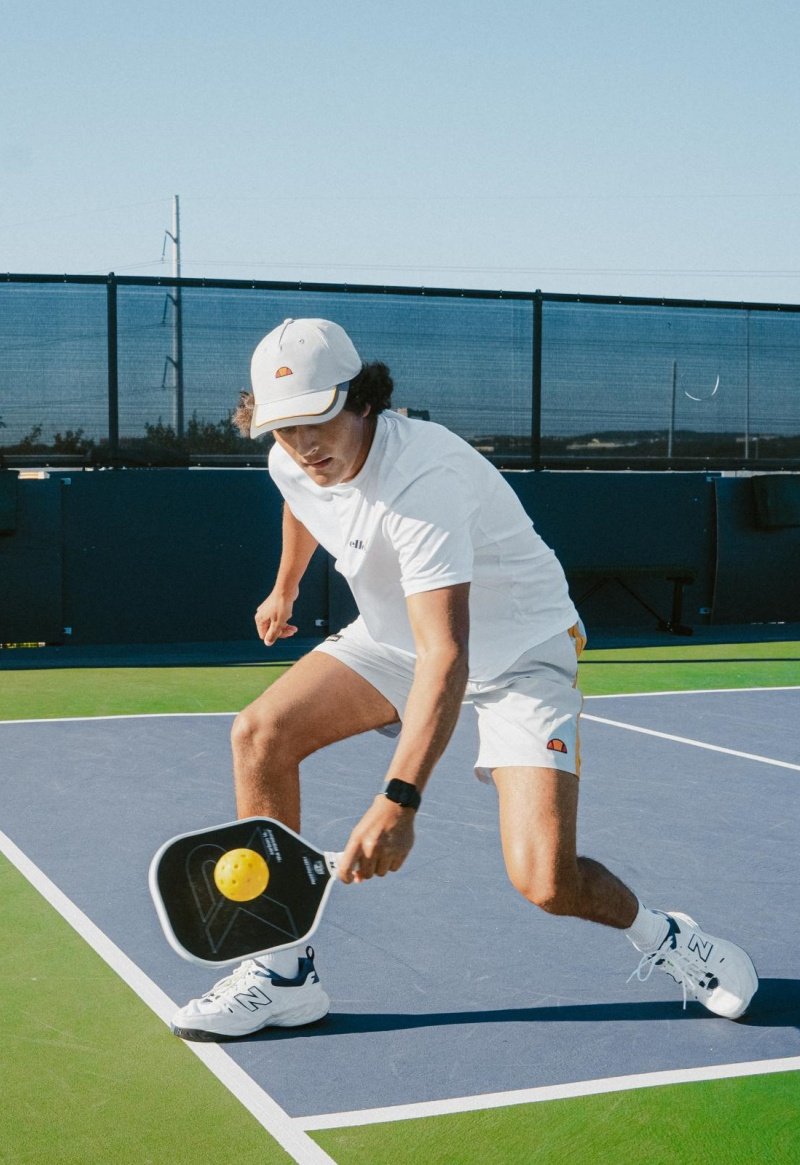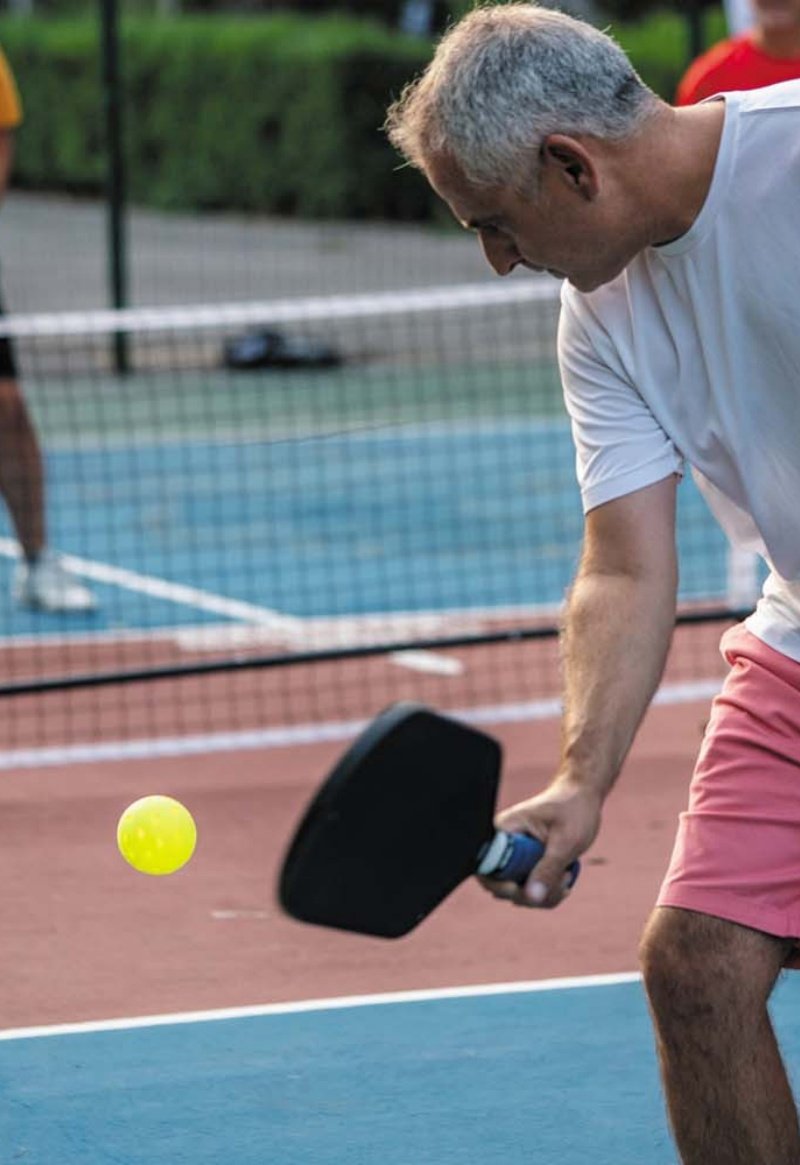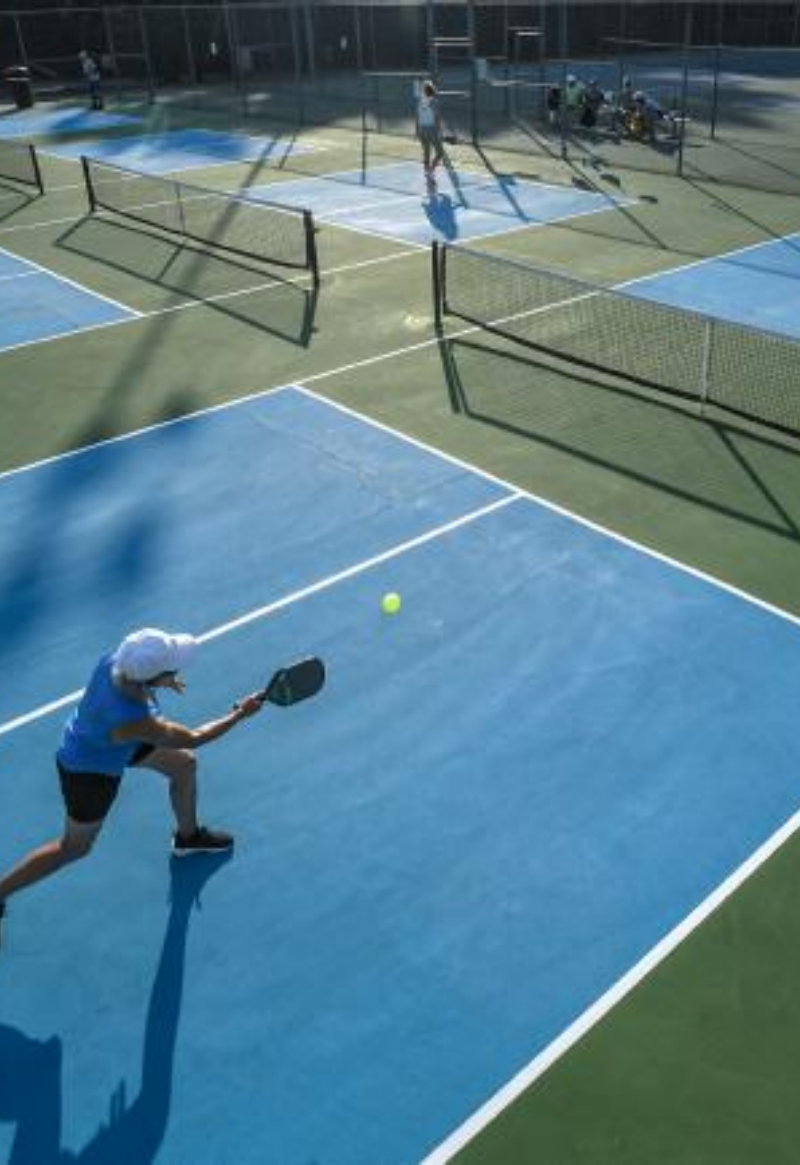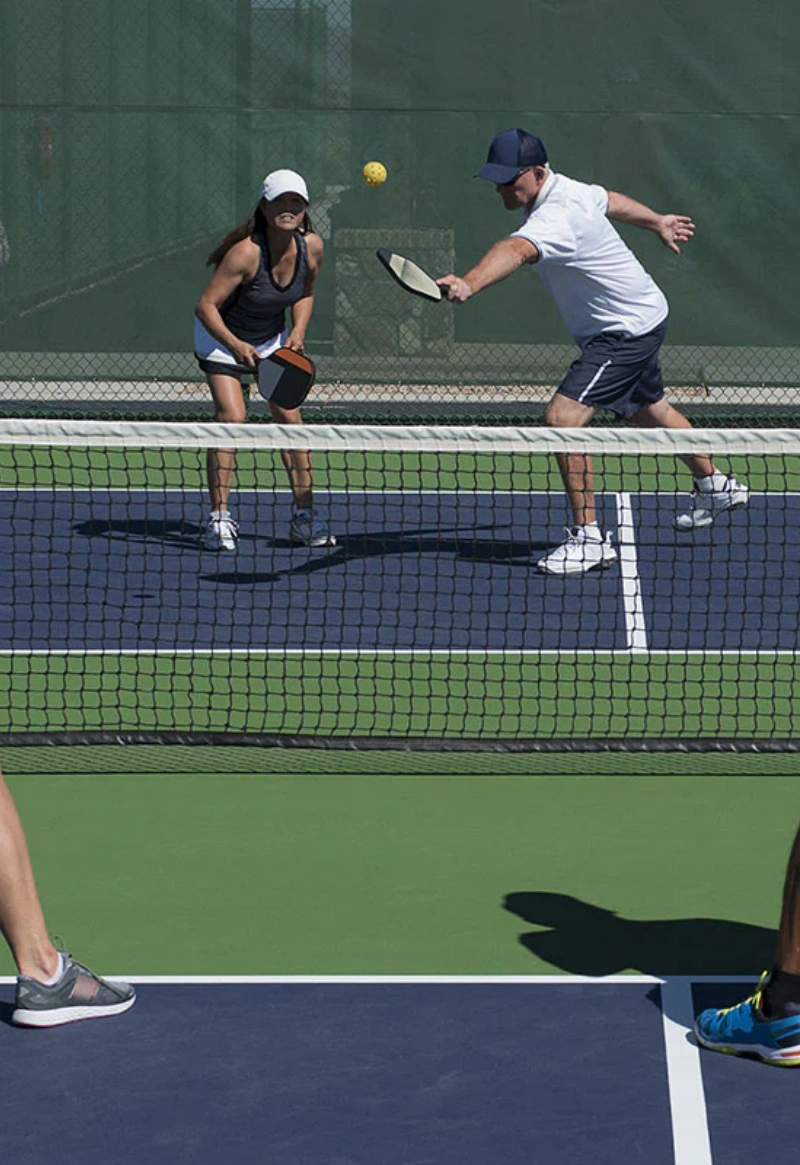Pickleball has grown significantly in popularity in recent years, leaving many to wonder if it could serve as an effective way to practice for tennis.
Pickleball is a game with similarities to tennis, offering valuable practice for skills such as footwork1, agility2, and hand-eye coordination3. However, there are important differences between the two sports.
If you're a tennis player looking to switch things up or improve your skills, read on to explore the potential benefits and challenges of incorporating pickleball into your training routine.
Can playing pickleball make you better at tennis?
Playing pickleball can be a great way to improve certain tennis skills, but it's important to recognize that it is not a direct substitute for tennis practice.
While pickleball can help with footwork, quick reactions, and positioning, it differs significantly in terms of the types of shots, court size, and playing style compared to tennis.
Pickleball shares some similarities with tennis, such as the basic principle of rallying and positioning, but there are key differences. For example, pickleball is typically played on a smaller court, with a paddle instead of a racket. These distinctions impact the movement patterns, shot types, and the overall intensity of the game.
H3: Footwork and Agility
In pickleball, you'll develop fast footwork, especially in the kitchen area, which translates well to tennis. Quick lateral movement is essential in both sports, so practicing agility in pickleball can be beneficial for tennis players who need to cover the baseline or net.
H3: Reaction Time
Both sports require excellent hand-eye coordination, and pickleball can help players sharpen their reflexes. The rapid pace of the game can hone a player’s ability to react quickly to an opponent’s shots—skills that are easily transferable to tennis.
H3: Shot Mechanics
The shots in pickleball differ from those in tennis in terms of technique and speed. The paddle in pickleball offers less spin and power than a tennis racket, meaning the mechanics of strokes are different. While pickleball practice may improve general rallying skills, tennis-specific shot training should not be overlooked.
What are the disadvantages of pickleball?
Although pickleball offers many advantages for tennis players, it also comes with some limitations that could hinder your tennis development.
Pickleball can cause you to focus on skills that are not directly related to tennis, which may affect your overall tennis game.
One significant disadvantage is that pickleball's smaller court size and slower pace can lead to less cardiovascular conditioning than tennis. Tennis players are used to covering a larger area and playing longer rallies, whereas pickleball can sometimes become more about quick, short bursts of movement.
H3: Lack of Intensity
Tennis matches are typically longer, requiring players to maintain a high level of endurance. Pickleball games, on the other hand, tend to be shorter with less sustained effort. This difference in intensity may limit the cardiovascular4 benefits a tennis player gains from playing pickleball.
H3: Shot Variety
Pickleball has a smaller set of shots compared to tennis. While tennis involves powerful serves, topspin groundstrokes, and volleys, pickleball often revolves around softer shots like dinks and serves with less emphasis on spin. For tennis players, this lack of shot variety may prevent them from fully developing all aspects of their game.
H3: Physical Conditioning
The physical demands of tennis are higher, involving a greater range of motion, strength, and stamina. While pickleball can be a fun workout, it may not challenge the muscles used in tennis to the same degree. This is especially true when it comes to power shots and serving techniques.
Do professional tennis players play pickleball?
Some professional tennis players have shown interest in pickleball, but it remains a niche sport among the elite tennis community.
While pickleball’s popularity is growing, most professional tennis players tend to stay focused on their tennis careers rather than making it a regular part of their training.
Many professional tennis players view pickleball as a recreational activity rather than a serious sport to enhance their tennis skills. However, certain players have acknowledged the benefits of playing pickleball, especially for recovery or to switch up their routine.
H3: Benefits for Recovery
Pickleball can provide a low-impact workout that helps tennis players recover between matches or training sessions. It’s a way to maintain mobility, improve coordination, and stay active without straining the body too much.
H3: A Fun Alternative
Pickleball offers a fun way to break up the monotony of tennis training. Professional players may use pickleball for relaxation and enjoyment during their downtime. It’s a social sport, making it great for group activities.
H3: Limited Impact on Training
While playing pickleball can improve certain aspects of fitness, it isn't a replacement for tennis drills and match play. Most pros focus on tennis-specific training to stay at the top of their game.
Why do people switch from tennis to pickleball?
The appeal of pickleball lies in its accessibility, ease of learning, and the fact that it offers a fun, low-impact alternative to tennis.
Many people switch from tennis to pickleball because the game is easier to pick up, offers less strain on the body, and provides more opportunities for social engagement.
The rapid rise of pickleball can be attributed to its appeal to all ages and skill levels. Unlike tennis, which often requires more space, equipment, and a higher skill level, pickleball can be played by almost anyone, regardless of experience or fitness level.
H3: Easier to Learn
For beginners, pickleball is less intimidating than tennis. The smaller court and slower pace make it easier to develop basic skills, like serving, volleying, and positioning, without feeling overwhelmed.
H3: Social Aspect
Pickleball has a strong social component, with players often meeting in local clubs or recreational centers. Tennis players may switch to pickleball to enjoy a less competitive environment, where the focus is more on fun and interaction.
H3: Less Physical Stress5
For individuals with joint pain or other physical limitations, pickleball is a more accessible option. The smaller court and slower ball speed reduce the risk of injury, making it a suitable alternative for those who find tennis too physically demanding.
Conclusion
While pickleball offers benefits for tennis players, it’s not a perfect substitute for tennis training, and switching may come with some trade-offs.
-
Understand why footwork is important in both tennis and pickleball and how it improves athleticism. ↩
-
Learn how agility training in pickleball translates to better movement in tennis. ↩
-
Discover the connection between hand-eye coordination in both sports and its impact on performance. ↩
-
Learn why pickleball's smaller court size affects cardiovascular conditioning. ↩
-
Understand how pickleball provides a less strenuous physical alternative for those with joint issues. ↩








